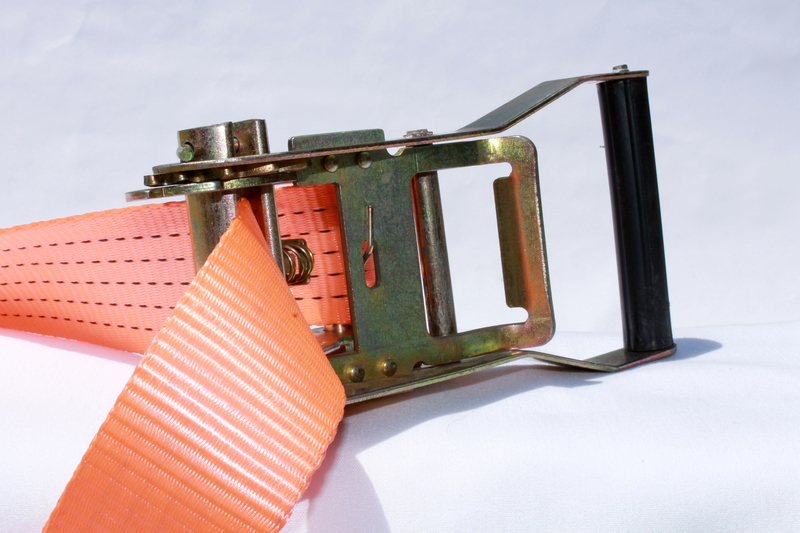How to Move a Piano Without Risking Damage to Your Instrument or Yourself
Moving a piano is no small feat. Whether you own a grand piano, upright piano, or a spinet, one thing is certain: pianos are heavy, delicate, and potentially dangerous to move. While the beautiful instrument can be a centerpiece in your home, piano moving is not a task to take lightly. In this comprehensive guide, we will explore how to move a piano safely without risking damage to the instrument or injury to yourself.
Why Is Moving a Piano So Challenging?
Pianos are unique pieces of furniture and musical precision. Grand pianos and upright pianos can weigh anywhere from 300 to over 1,200 pounds! Their weight is not just an issue of strength; their shape and fragile components make them especially vulnerable to damage. Mistakes in moving could not only be costly but can also lead to personal injury.
- Size and Weight: Larger pianos are awkwardly shaped and require multiple people to move.
- Internal Mechanisms: Hundreds of delicate parts are carefully balanced inside--one wrong jolt can throw the piano out of tune or worse.
- Exterior Finish: Highly polished surfaces are easily scratched or dented.
- Risk of Injury: The heavy mass and shifting center of gravity can cause strains, back injuries, and even crushed fingers or toes.

What Makes Piano Moving So Dangerous?
Moving a piano without professional help can be risky for several reasons:
- Pianos are massive and unwieldy.
- You risk damaging floors, walls, stairs, and doorways.
- Improper technique can lead to severe injury.
- Uneven weight distribution can cause the instrument to tip or fall.
How to Prepare for a Piano Move
Preparation is the key to successfully moving a piano without damage or injury. Follow these preparatory steps before you attempt any piano move:
Measure Everything
- Measure the piano: Know the dimensions--width, height, and depth.
- Check doorways, stairs, and hallways: Ensure there's enough clearance.
- Plan the route: Walk the entire path from start to finish, removing obstacles ahead of time.
Get the Necessary Equipment
You should gather the following tools and supplies for safe piano relocation:
- Piano dollies or skids: Designed to support the heavy weight.
- Furniture straps: For a secure grip and proper weight distribution.
- Moving blankets: Padding helps prevent scratches and dents.
- Packing tape and plastic wrap: Keeps moving blankets in place.
- Work gloves: To improve grip and protect your hands.
- Ramps: For managing stairs or uneven levels.
- Measuring tape: To re-verify space and clearance as you go.
Enlist a Team
Step-by-Step Instructions on How to Move a Piano Without Injury or Damage
Step 1: Secure and Protect the Piano
- Close and lock the keyboard lid: Prevents keys from getting damaged.
- Wrap the body of the piano: Use moving blankets to protect the surface, securing them with plastic wrap or tape (avoid sticky tape on wood).
- Remove moving parts where possible: For grand pianos, take off the legs, pedals, and music stand. Place these delicate parts in padded moving boxes.
Step 2: Position the Moving Equipment
- Upright pianos: Place the dolly alongside the back; tilt the piano slightly and gently slide onto the dolly.
- Grand pianos: After removal of the legs and pedals, carefully tilt the piano onto a piano board, keeping the instrument stable at all times.
Step 3: Lifting and Moving the Piano
It's vital to use proper lifting techniques to avoid personal injury:
- Bend at the knees, not the waist, to protect your back.
- Keep your back straight and your core engaged.
- Lift with your legs, not your back or arms.
- Communicate with your team--count to three before lifting or moving.
- Keep the piano as flat and balanced as possible to avoid internal shifting.
Step 4: Navigating Obstacles Safely
- Doorways and Hallways: Use measuring tape to ensure the piano will fit. Move slowly -- don't rush.
- Stairs: Always use ramps if available. If not, the stronger individuals should be guiding from below, while others support from the sides. Never attempt stairs with too few helpers.
- Corners: Take extra care with sharp turns. Inch the piano slowly and protect walls with extra padding.
Step 5: Loading Onto a Truck or Trailer
- Ensure the vehicle has a low, sturdy ramp or hydraulic lift gate.
- Roll or slide the piano slowly--never force or rush the process.
- Use straps to secure the piano to the wall of the trailer or moving truck to prevent movement during transit.
- Place the piano on the truck so that it sits upright (for uprights) or flat on its side (for grands) with no items stacked on top.
Step 6: Unloading and Positioning
- Use the same diligence to unload and maneuver into your new space.
- Unwrap the piano and re-assemble any parts (like legs and pedals) carefully.
- Set the piano in its new home, away from direct sunlight, drafts, or damp spots.
Extra Tips for Safe Piano Moving
- Plan for weather conditions: Rain and snow add risk--consider delays or use waterproof covers.
- Consider humidity and temperature: Sudden changes can affect tuning and wood finish.
- Use professional help for long distance moves: Piano moving companies have specialized equipment and insurance.
- Don't rush: Patience is essential for safety. Accidents often happen when people hurry.
- Tune after the move: Moving usually knocks the instrument out of tune. Schedule a tuning appointment once it settles in its new location.
Understanding When to Hire Piano Moving Professionals
While some upright piano moves within the same home (on a single floor) may be handled by careful do-it-yourselfers, many scenarios absolutely require professional piano movers:
- Moving grand pianos or baby grands through stairs or tight spaces.
- Long-distance or cross-country piano transport.
- Older, antique, or especially valuable instruments.
- Moves involving elevators, lifts, or multi-story buildings.
Professional movers have the experience, manpower, and insurance coverage to protect both your piano and your property.
Questions to Ask When Hiring Piano Movers
- Do you specialize in moving pianos?
- Are you insured for damage or injury during the move?
- Can you provide references from other piano owners?
- What equipment will you use?
- How will you handle stairs or tight doorways?
- What happens if there is accidental damage?
Common Mistakes to Avoid When Moving a Piano
- Moving with too few people: Never underestimate the weight and instability.
- Skipping preparation and planning: Take the time to measure, map out your route, and clear all obstacles.
- Using the wrong equipment: Always use a proper piano dolly or skid, not a regular furniture dolly.
- Lifting incorrectly: Most moving injuries happen when someone tries to lift too much with their back or arms.
- Ignoring surface protection: Moving a heavy piano can scratch floors or damage carpeting--use floor protection when moving across surfaces.
- Forgetting to secure the load: Always strap down the piano securely in a moving vehicle to prevent shifting during transport.

FAQ - How to Move a Piano Without Damage
Can I move a piano by myself?
- No. Even small pianos are too heavy for one person and you risk serious damage or personal injury. Always enlist sufficient help or hire professional piano movers.
How much does professional piano moving cost?
- Prices vary by distance, type of piano, stairs, and complexity, typically ranging between $200 and $1,000+ for a local move. Grand pianos, stairs, and long distance all add to the overall cost.
Does moving a piano harm its tuning?
- Yes, moving can disrupt the delicate balance that keeps your instrument in tune. Always have it professionally tuned after the move and allow 1-2 weeks in the new environment for it to adjust.
What equipment do I really need?
- You will need a piano dolly/board, moving blankets, heavy-duty straps, and a vehicle with an appropriate ramp or lift. For stairs, additional manpower and planning are required.
Conclusion: Move Your Piano Safely and Protect Your Investment
Moving a piano is not just about muscle--it's about careful planning, the right equipment, and the safety of people and the instrument. Whether you're moving your beloved upright to another room or undertaking a cross-town relocation for a grand piano, following these tips will help you move your piano without risking damage to your instrument or yourself. Never hesitate to call a professional if the job is too big or complex--your safety and your instrument's integrity are always worth it.
Remember: When in doubt, hire a piano moving expert to avoid the most common--and costly--mistakes. Taking precautions today ensures your piano will bring music to your home for many years to come!



